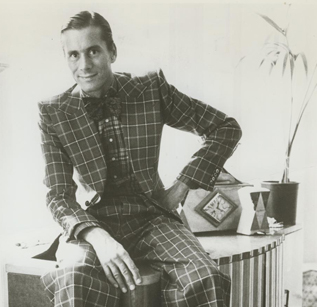One of my favourite cinematic misadventurers is Augusta Bertram, the titular relative to the reliably stuffy and highly strung Henry Pulling in 1972's Graham Greene adaptation,
Travels With My Aunt, as portrayed in mercurial, bombastic and somewhat affected style by Dame Maggie Smith. This, of course, has much to do with her characterisation as a previously unworldly convent schoolgirl whose dalliance with an older sophisticate eventually transforms her into a trouble-prone, mendacious but fundamentally good hearted manipulator, and more importantly, a sensuous, consummate aesthete with more than a passing, and doubtlessly deliberate, resemblance to cheetah walker and epicurean profligate,
Luisa, the Marchesa Casati, that infamous and bottomless well of extravagant vanity:
Portrait by Giovanni Boldini, 1908, from the private collection of Andrew Lloyd Webber
In fact, Aunt Augusta's Casati-like "commissioning of her own immortality" forms a significant plot point as the story unfurls. She makes for quite a striking flame haired nude, if I do say so myself
And what Augusta lacks in exotic pets, she makes up for in Louis Gossett Jr's bizarre but canny, quasi mystical but oddly grounded, and whimsical but efficient Wordsworth - a fictional personification of the word "protean" if ever there was one. However, given that she is rather dependent on him, he is assuredly of greater utility than wearing gilded snakes as jewelry
The underepresentation of the film on the WWW might suggest it to be the sort of lost gem whose soundtrack will eventually be exhumed by a reissues label. It's not quite of that vintage, but it is more than diverting, is leavened with soulful pathos in parts, and contains some minor comic gems, such as the amusing joke of Augusta's lavish and bohemian London dwelling being situated one floor above a working class pub. Aside from the grandeur that makes up the wardrobes and leisurely homes of Augusta, her friends, her lovers and her enemies, the film is a treat of foreign locales, the less suspect side of the nightlife and the more conservative early 1970s menswear; usually 3 dependable visual enticements to watch the filmed works of the decade. There is also a cute hippie (Cindy Williams), who may serve to remind all trustafarians that they have precursors
The other attraction to the film is its tendency to roam, both around the earth as Augusta, Henry and Wordsworth jaunt on their extended caper, and through Augusta's memories as she reflects on the woman she came to be. This facet makes for quite the balancing act against the madcap style of the rest of the plot and Smith's effusive performance; ultimately, Travels With My Aunt is a fine entry into the canon of curate's eggs that are nevertheless rather charming, due in no small part to a fortunate confluence of skill and vigour
And if all else failed to entertain, there are always Anthony Powell's costume designs - they did win him his first Oscar, after all
















































,_La_Marchesa_Luisa_Casati_%281881-1957%29_con_un_levriero.jpg)













